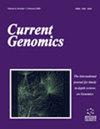结直肠黏液腺癌的转录组格局与肠道上皮细胞分化相似
IF 1.4
4区 生物学
Q4 BIOCHEMISTRY & MOLECULAR BIOLOGY
引用次数: 0
摘要
导言:结直肠粘液腺癌(MC)与腺癌(AD)在临床特征和分子特征上有所不同。目前对结直肠黏液腺癌的治疗不够精确,其分子特征仍不明确。本研究旨在探讨结直肠MC与AD在转录组水平上的差异,为精确治疗结直肠MC提供可能。研究方法评估癌症基因组图谱(TCGA)数据库中结直肠癌(CRC)患者的数据,然后进行差异分析和加权基因共表达网络分析(WGCNA),以确定结直肠MC和AD之间的差异中枢RNA。在不同的结肠癌细胞系中,通过实时定量 PCR(qRT-PCR)验证了差异中枢 lncRNA 和重要模块的中枢 RNA。结果显示通过比较结直肠癌 MC(52 个,占 13.3%)和结直肠癌 AD(340 个,占 86.7%),总共发现了 1680 个差异表达 RNA(DER)。通过 WGCNA,发现了一个与粘蛋白相关的 RNA 模块,而其他一些 RNA 可能与独特的免疫进展有关。最后,通过 qRT-PCR 验证了粘蛋白相关 RNA 模块中的 6 个差异中枢 RNA(CTD-2589M5.4、RP11-234B24.2、RP11-25K19.1 和 COLCA1),它们在产生粘蛋白的结直肠细胞系(Ls174T 和 HT-29)中的表达水平较高。结论本研究表明,结直肠 MC 的临床治疗应与 AD 区分开来。进一步探讨肠细胞(鹅口疮细胞)分化与肿瘤发生以及 MC 独特的免疫进展可能有助于确定结直肠 MC 的关键治疗靶点。还需要进一步研究免疫疗法在结直肠癌 MC 中的应用。本文章由计算机程序翻译,如有差异,请以英文原文为准。
Transcriptomic Landscape of Colorectal Mucinous Adenocarcinoma has Similarity with Intestinal Goblet Cell Differentiation
Introduction: Colorectal mucinous adenocarcinoma (MC) differs from adenocarcinoma (AD) in clinical features and molecular characteristics. The current treatment of colorectal MC is not precise enough, and the molecular characteristics remain unclear. The study aims to explore the difference between colorectal MC and AD on the transcriptome level for the possibility of treating colorectal MC precisely. Methods: The data of colorectal cancer (CRC) patients from The Cancer Genome Atlas (TCGA) database was assessed, and then differential analysis and weighted gene co-expression network analysis (WGCNA) were performed to identify the differential hub RNAs between colorectal MC and AD. Differential hub lncRNAs and hub RNA of significant modules were validated by quantitative real-time PCR (qRT-PCR) among different colon cancer cell lines. Results: In total, 1680 differential expressed RNAs (DERs) were found by comparing colorectal MC (52, 13.3%) with AD (340, 86.7%). Through the WGCNA, a mucin-associated RNA module was identified, while some others might be associated with unique immune progress. Finally, 6 differential hub RNAs in the mucin-associated RNA module (CTD-2589M5.4, RP11-234B24.2, RP11-25K19.1 and COLCA1) were validated by qRT-PCR and showed higher expression levels in mucin-producing colorectal cell lines (Ls174T and HT-29). Conclusion: This study suggests that clinical treatments for colorectal MC should be differentiated from AD. Further exploration of enterocyte (goblet cell) differentiation with tumor genesis and the distinct immune progression of MC may help to identify key therapeutic targets for colorectal MC. Further research on the application of immunotherapy to colorectal MC is needed.
求助全文
通过发布文献求助,成功后即可免费获取论文全文。
去求助
来源期刊

Current Genomics
生物-生化与分子生物学
CiteScore
5.20
自引率
0.00%
发文量
29
审稿时长
>0 weeks
期刊介绍:
Current Genomics is a peer-reviewed journal that provides essential reading about the latest and most important developments in genome science and related fields of research. Systems biology, systems modeling, machine learning, network inference, bioinformatics, computational biology, epigenetics, single cell genomics, extracellular vesicles, quantitative biology, and synthetic biology for the study of evolution, development, maintenance, aging and that of human health, human diseases, clinical genomics and precision medicine are topics of particular interest. The journal covers plant genomics. The journal will not consider articles dealing with breeding and livestock.
Current Genomics publishes three types of articles including:
i) Research papers from internationally-recognized experts reporting on new and original data generated at the genome scale level. Position papers dealing with new or challenging methodological approaches, whether experimental or mathematical, are greatly welcome in this section.
ii) Authoritative and comprehensive full-length or mini reviews from widely recognized experts, covering the latest developments in genome science and related fields of research such as systems biology, statistics and machine learning, quantitative biology, and precision medicine. Proposals for mini-hot topics (2-3 review papers) and full hot topics (6-8 review papers) guest edited by internationally-recognized experts are welcome in this section. Hot topic proposals should not contain original data and they should contain articles originating from at least 2 different countries.
iii) Opinion papers from internationally recognized experts addressing contemporary questions and issues in the field of genome science and systems biology and basic and clinical research practices.
 求助内容:
求助内容: 应助结果提醒方式:
应助结果提醒方式:


